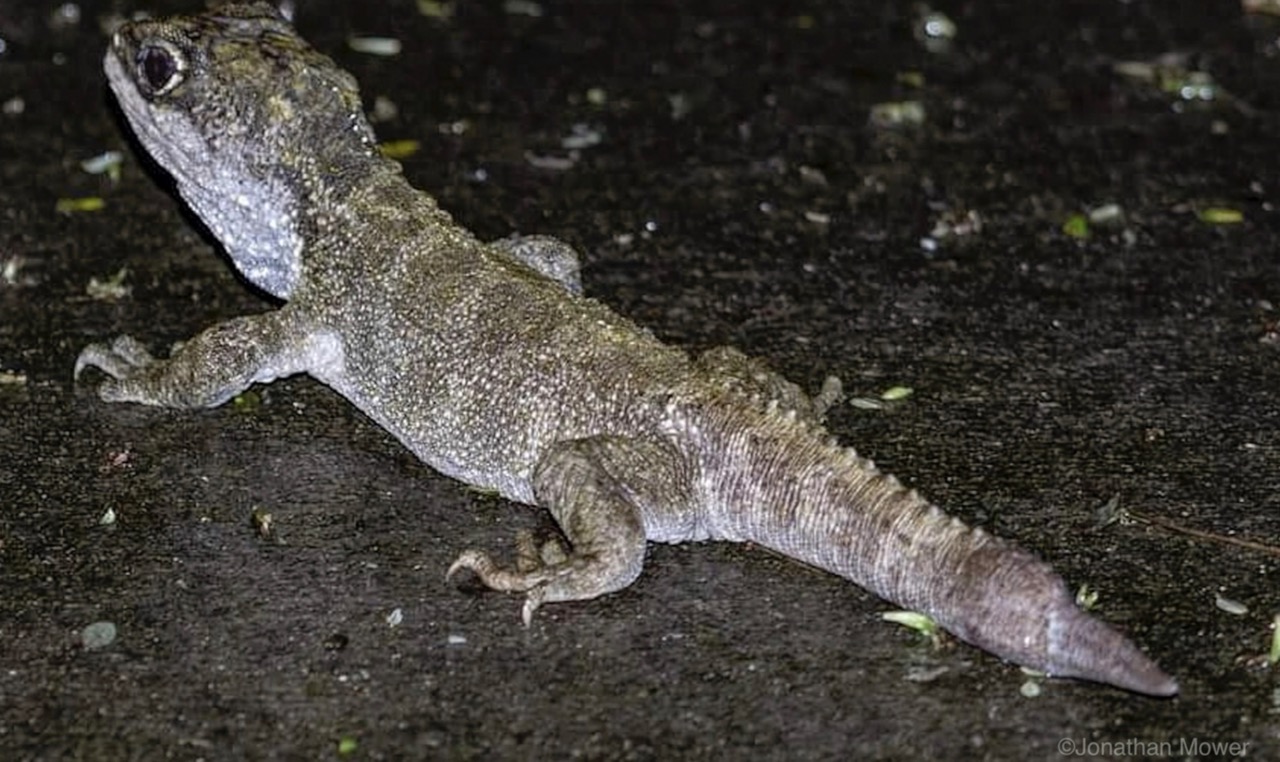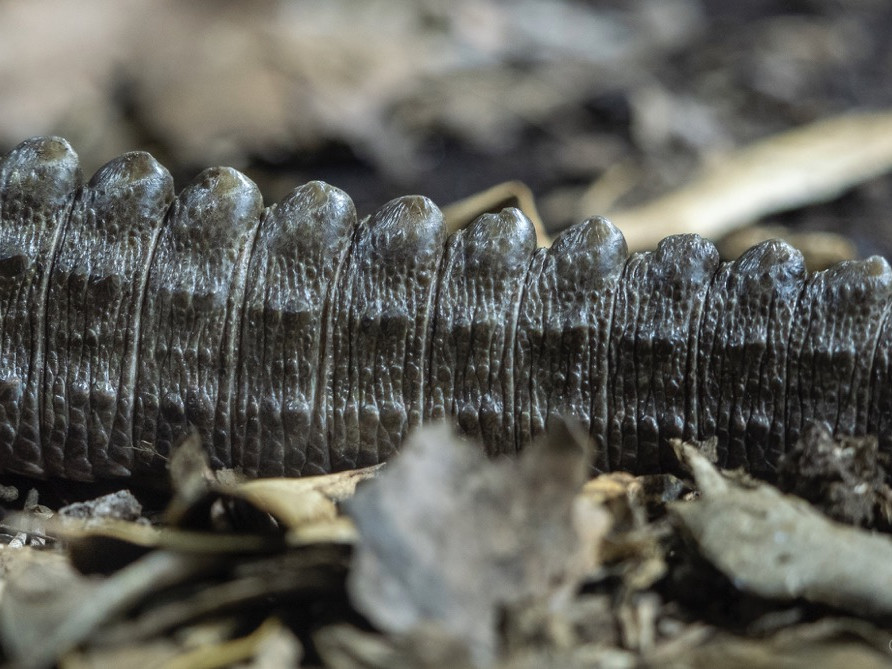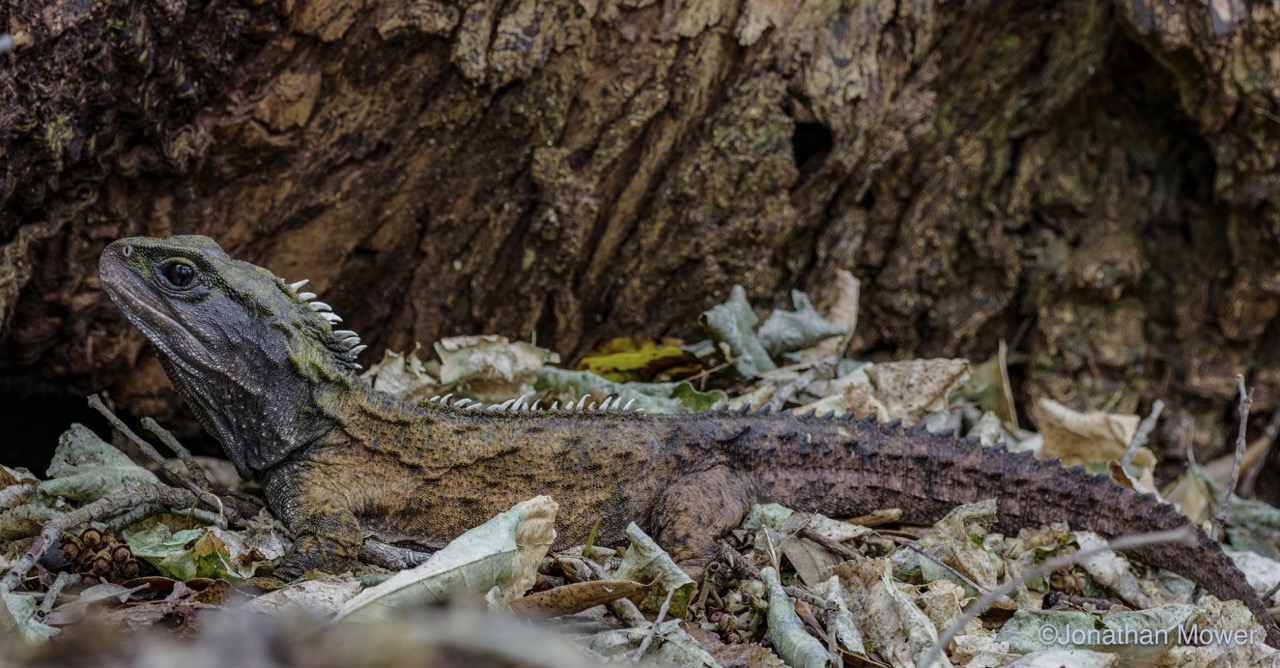Tuatara - Ancient Escape Artist
Author and photo credit: Jonathan MowerDate: June 2024
Tuatara are the sole surviving member of an entire order of animals, the Rhynchocephalia, whose ancestors separated from those of the Squamata (lizards and snakes) in the late Triassic period, so about 240 – 250 m years ago.
Reaching total lengths of over 600mm, they are the largest of New Zealand’s endemic, terrestrial reptiles (some males recorded at a hefty 1.1kg), with their ridged tails accounting for slightly more than half of that total body length. Muscular and powerful, the tuatara’s tail plays a significant role in balancing locomotion, storage of body fat, and displays of dominance or physical defence.
To a superficial observer, the tuatara might be described as resembling a lizard, but in reality, there are significant differences between tuataras and other reptiles.
One similarity, however, is the ability to sever deliberately and then regrow part of their tail. The practice is known as caudal autotomy and is a defensive mechanism that allows them to escape harm or predation.
Why would you intentionally drop off part of your body?
On their island sanctuaries, kahu/harriers are significant predators of tuatara. They are also predated by other birds including karearea/falcons, kōtare/kingfishers, and possibly, ruru/ morepork and karoro/black backed gulls. Tuatara must also watch out for larger tuatara, giant centipedes, and mammalian predators such as rats, if they are present.
Severing a tail segment would allow a tuatara to escape a predator by distracting them with a small, wriggling piece of tail or by leaving the predator with a mouth full of severed tail as the tuatara escapes lethal harm.
Tail loss is an expensive process
Unlike many other reptiles, tuatara lack abdominal fat storage organs known as corpora adipose and instead store significant amounts of fat in their tails. This means tail loss sacrifices large energy stores and diminishes its ability to move at speed to avoid predators or confront rivals. This, in turn, can lead to reduced breeding success and diminished abilities in behavioural signalling and territorial displays until a replacement tail can be grown. As regrowth is in tuatara time, that is, exceedingly slowly, the costs can take a significant amount of time to recoup.
How does the tail separate?
If you were to look closely, you would notice a series of vertical creases running from the tail’s tip toward the abdomen. Each of the vertical creases is positioned between all the caudal (tail) vertebrae except for the 5-7 closest to the abdomen. These creases mark the shear points at which the tail can be intentionally severed.
You could assume the tail would be severed between vertebrae. However, that is not the case. Rather than splitting between the vertebrae, the tail instead separates when the caudal vertebrae bone shears in two as the skin splits, muscle segments separate, and the spinal cord and blood vessels sever.
Replacing their tail
When the tail is severed, muscle contraction occurs, blood loss is staunched, and wound healing begins. Eventually, the wound site is covered by epithelial cells and regrowth of the tail begins.
It would be more correct to say that the tuatara regrows ‘a’ tail rather than ‘their’ tail, for the tuatara cannot regrow a tail that is identical to that which was autotomised. Sometimes the tail can break at the site of the new tail, and the resulting regrowth forms a forked tail, and sometimes it may break again, resulting in a third end to the tail.
Rather than being built around a segmented bony skeleton, the new tail is built around an unsegmented tube of cartilage that lacks the fracture plates of the original. The new tail segments tend to be shorter, often with a ‘nub like’ appearance that lacks the complex colours and scale patterns of the original as well as the dorsal crest of scales and spines. The tuatara does however develop a significant amount of connective tissue, muscle mass and fat storage. All of this is a slow process however, very slow, that is to say, in tuatara time. It will take years for the tuatara to grow a tail that will fulfil its purpose as a fat repository and functional appendage for balanced locomotion, useful for behavioural displays and aggressive encounters, especially in males.
Why can’t they grow a tail like the original?
Though tuatara and lizards possess the ability to undertake caudal autotomy, the ability to regrow identical limbs is possessed by only one order of the super-class Tetrapoda (four legged animals), the urodeles, which includes axolotls, newts and salamanders.
It is thought that this ability was once possessed by the ancestors of most animals but interestingly, it is considered that all tetrapods possess the ability to do so as embryos but lose it as they mature.
Acknowledgements:
Tuatara: Biology and conservation of a venerable survivor. Professor Dr Alison Cree



